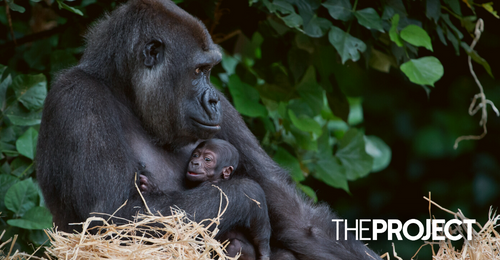Lowland gorillas at Zoo Atlanta have invented a way to get the attention of their zookeepers, as they came up with a strange sound.
Using what has been described by zookeepers as a strange cough-sneeze hybrid, the gorillas have been able to call their zookeepers over with the noise.
It has only been documented in two other species the ability to create new vocalisations to attract human attention. Those species were zoo-housed chimpanzees and orangutans. Now, we can add gorillas to that list.
24-year-old female gorilla Sukari demonstrates this gorilla equivalent to a human 'ahem' which researchers have called a 'snough'.
Gorilla Koko was under a spotlight for gorilla intelligence in the '80s and '90s with her incredible ability to communicate with humans using sign language.
She was trained by humans and worked diligently at it, but this discovery shows gorillas have taken it upon themselves to establish unique communication with us on their own terms.
So how did the zookeepers know it was an intentional noise?
Researcher Roberta Salmi from the University of Georgia, a biological anthropologist, and her colleagues, ran an experiment to confirm the purpose of the 'snough', by placing eight of the zoo's gorillas in three different situations.
In the first instance, only the keeper was present; in the second only the food was present; and in the final one, the keeper was holding the food. The food and keeper when present were in sight but out of reach.
They observed that the gorillas would use the ‘ahem-like’ sound most, when there was a human present with the food.
This indicated that it was intentional to garner human attention, to get the food.
Interestingly, the same call has been found in other US zoos too. As many as 33 gorillas housed at 11 different zoos across the US and Canada, are reported to make a similar call, although only six gorillas in four different facilities have been confirmed using the sound so far.
"Evidence of vocal learning and/or innovation, although scant, is slowly accumulating for captive apes," the team wrote in their paper.


























